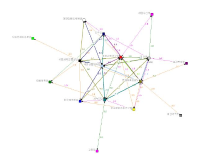
The purpose of this study was to investigate structural characteristics and participants` roles & functions of sport policy network in Korea, by social network analysis on structural characteristics of sport policy network and AHP analysis on participants` roles and functions. For that, 21 executive officers from 19 organizations and agencies related to sports policy were selected as study subjects, and, the materials collected from whole twice surveys on them were analysed by Ucinet 6 and Expert Choice 2000 program. As the results, the governmental organizations like the Blue House and Ministry of CultureㆍSports and Tourism composed the central position group of sport policy network of Korea, and took the main functions of planing and arrangement within their main roles of policy agenda formation and policy decision, so, sport policy network of Korea could be called centralized network by government. And, in cases of private agencies, Korea Sports Council composed the central position group only in policy network of professional sport, Korea Council of Sport for All of sport for all, and Korea Sports Association for the Disabled of disability sport, and, each of them took the main roles and functions of policy execution in their fields, so, it was obvious that the private agencies were divided into their own sport policy areas.

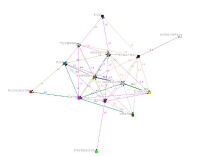
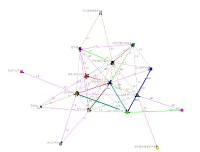
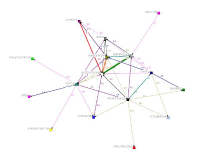

Purpose and Methods The purpose of this study is to clarify the concepts of ‘youth sport policy’ and policy areas as an alternative to school physical education concept and to provide a core conceptual framework for the development and implementation of youth sports policy in the future. Results The notion of youth sport policy is a process of seeking rational decision-making and optimal alternatives to solve the social problems associated with sports participation of youth in elementary school(aged 6 years) to high school(aged 18 years). The concept of 'youth sport' can reflect modern culture rather than 'school physical education' and it can be seen as more future oriented for lifelong participation in sports. The areas of youth sport policy are classified into physical education, school sport, and community sport. Physical education refer to the physical education classes operated by the Ministry of Education, and the school sport refers to the sports activities that take place throughout the school. Community sport is sports activities that are carried out outside the school by the choice of youth, which is the area where cooperation between the public sector and the private sector is needed. Conclusion In conclusion, healthy and active life for youth is required to establish cooperative governance of related organizations in order to ensure proper linkage between youth sport policy areas. Through this, it is necessary to solve the social problems of youth and promote their lifelong enjoyment of sport more consistently, efficiently and effectively.

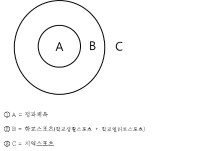

Purpose This study aims at investing the educational meanings of school physical education policy by analyzing the direction (ideal goal, goal, objective and program) of the policy in Korea and England. Methods The comparative research design was conducted by the policy literature analysis. In order to clarify the significance of the main discourse embedded the school physical education policy to the educational practice, I used qualitative content analysis based on the interpretive paradigm. Results The school physical education policy in Korea is divided into goal for general students and student athletes for 'happy students and school life', while the policy in England seeks to promote participation of competitive sports through school-community linkage for lifelong sports participation. As a result of the discourse analysis, the ambiguity of school physical education policy due to the complexity of various discourses (e.g. moral development, health, sports) diminishes the effectiveness of policy implementation as well as the teachers’ educational practice. In addition, competition sports discourse has been analyzed to limit the participation of many students in sports and to adversely affect lifelong participation in sports. Conclusions In conclusion, It is necessary to activate theoretical and empirical research that is the basis of building the school physical education policy direction and to establish cooperative governance for the policy implementation. In addition, student participation in lifelong sports and evidence-based policy making and practice are required.

PURPOSE This study reviews the operational status of the four courses that comprise the 'International Referee Development Program' in 2022 and 2023, analyzes participant satisfaction and feedback, and derives policy implications for the program’s future direction from the perspective of its operators. METHODS To achieve the study objectives, a literature review was conducted, survey items were developed, and expert meetings were held. RESULTS The four sub-courses within the 'International Referee Development Program' were analyzed by comparing modifications made between 2022 and 2023, evaluating satisfaction survey results, and identifying operational improvements. From the operators’ perspective, the study emphasized the urgency of conducting a comprehensive review of the scope of sports included in the referee development program, establishing clear evaluation criteria for selecting and monitoring focus areas, enforcing sanctions for dropouts under the current format and maximizing outcomes through long-term support. CONCLUSIONS It is expected that by establishing more macro-level and practical key performance indicators (KPIs) under the guidance of the Ministry of Culture, Sports, and Tourism and the Korea Sports Promotion Organization, the program’s continuity and direction will be maintained, even in the event of changes in responsible personnel.
Purpose This research aims to find out factors affecting policy at the agenda setting phrase. In order to analyze, Multiple Streams Framework(MSF) was adopted. Based on the frame, policy problem stream, policy alternative stream, political stream, window of policy change, and policy entrepreneur were applied for analytical framework. Methods The research conducted qualitative research with triangulation. Data were collected by in-depth interview and literature review including newspaper and previous researches. Content analysis was done for deriving factors. Then categorization and itemization were conducted. Results For the result, factors derived from the study were not different from factions mentioning at MSF. For policy problem stream perspective, this study draw International Sports Event Result, Hosting International Sports Event, Elite Sports Athletic Recruiting, Athletic and Sports Category Supporting System, Student Study Right/Student Human Right/Sports Academy, Policy Reality, Sport Expert/Institute Capability, Perception of Elite Sport Origin. factors. In the case of Policy Alternative Stream, This study finds Sports Related Administrative Organization Restructure, Supporting Policy of Elite Athletic Promoting Restructure, Parent Policy of Elite Athletic Promoting Policy, Parent Institution of Elite Athletic Promoting Law, Incentive Institution for Elite Athletic, Supporting Institution for Elite Athletic, Value of Policy Community for Sports Category Feature, Value of Policy Community for Sports Category Fairness, Budget, International Sports Event Hosting Policy factors. Lastly, in the political perspective, this study figures out Elite Sports for Nation Integration, Elite Sports for Enhancing National Prestige (North and South Replacement), Elite Sports for Inter Korean Reconciliation and Cooperation, Sports Related Administrative Organization Restructure Following Regime Change, Parent Policy Change of Elite Sports Following Regime Change factors. Conclusions The research has academic implication for generating elite sport policy agenda setting model as well as practical implication for urging effective participation of various practitioners concerning elite sport.
PURPOSE This study explores injury attributions accepted by serious football participants, specifically intermediate and advanced players. METHODS Utilizing Q methodology, 25 Q-samples and 33 P-samples were selected, and Q-classification was conducted. Principal component factor analysis through the PQ method (vers. 2.35) was employed for data analysis, and types were interpreted and named based on the Q-sample with a Z-score of ±1.0 or higher. RESULTS Results categorized injury attributions accepted by the participants into four types: 'Type I: Facility/ Human Resource Responsibility Type,” 'Type II: Luck/Other Responsibility Type,” 'Type III: Self Responsibility Type,” and 'Type IV: Insufficient Safety Education.” This study provided academic and policy discussions by reclassifying four types according to their internal and external location and controllability. CONCLUSIONS In conclusion, this study emphasizes the relevance of all four types of injury attribution to policy considerations. Ensuring participants' right to participate in safe and enjoyable sports requires addressing facilities/human resources, education, and insurance as major policy components of sports safety.
PURPOSE By comparing and analyzing the sport safety policies in New Zealand, the USA, and the UK, this study sought to propose sport safety policies for people with disabilities in Korea. METHODS This study utilized a comparative research design in three steps. Policy documents were collected from the websites of institutions that directly or indirectly influence the sports safety policies for people with disabilities in each country, as well as academic articles from both domestic and international research databases. RESULTS The data analysis revealed each country’s legal basis, operating entities, and delivery systems. CONCLUSIONS Based on the results, the following implications for the development of sports safety policies for people with disabilities are presented. First, the current legislation system that serves as a foundation for the sports safety policy should be strengthened. Second, a cooperative system should be established among various operating entities related to sports for people with disabilities. Third, the delivery system of sports safety policies for people with disabilities needs to be diversified. To sustain the growing participation of such individuals in sports, developing sports safety policies and guidelines specific to people with disabilities at the national level is essential.
This article analyzes and compares the methodologies used in physical activity participation surveys from England, Australia, and South Korea. Specifically, it examines the “2021–22 Active Lives Adult Survey” from England, the “2021–22 AusPlay (15+)” from Australia, and the “2022 National Sports Participation Survey” from South Korea, highlighting both similarities and differences in their approaches. The analysis led to two key insights. First, there is a need to expand the scope of respondents in South Korea’s National Sports Participation Survey. Currently, the survey targets only 0.02% of the population aged ≥10 years, whereas the surveys in England and Australia gather data from a wider age range and more diverse regions. Therefore, South Korea should adopt online, postal, and mobile survey methods to widen the respondent pool and enhance the representativeness and reliability of the data collected. Second, South Korea needs to update its physical activity participation standards. The current benchmarks fall below international recommendations. Establishing new criteria that specify activity duration, intensity, and type is essential for effectively improving public health policies. The results of this study emphasize the importance of accurately assessing and enhancing physical activity participation in South Korea. These findings are expected to contribute to the development of effective sports policy standards in line with the World Health Organization’s global action plan.
PURPOSE This study aims to provide policy recommendations for the development of women’s football and the enhancement of the Women’s University Football League (WUFL) by examining participant satisfaction and meaningfulness of football. METHODS To achieve this goal, we distributed survey questionnaires, including 5-point Likert scale and open-ended questions, and subsequently analyzed 153 responses using qualitative data analysis software, N-vivo. RESULTS Our findings reveal that female students actively engaged in the WUFL express high overall satisfaction. Furthermore, participants perceive football as a source of happiness, an energy booster, and a platform for new experiences. Their involvement in football goes beyond typical leisure; it is regarded as a form of serious leisure. DISCUSSION AND CONCLUSIONS Based on these results, we propose actions such as fostering and elevating amateur women’s competitions, promoting female students’ participation in football, and developing a comprehensive strategy for increasing women’s enjoyment of playing football.
PURPOSE The purpose of this study was to understand the athletic identity of youth football players and to trace its changing trend. METHODS Participants of this study included 93 players in 2005 and 94 players in 2021, who were in middle and high schools. All participants answered open-ended questionnaires. After the results of the inductive content analysis, the changing trend of the results was assessed. RESULTS The athletic identity of youth football players were collected from 811 raw data samples collected in 2005 and 741 collected in 2021 and categorized into 19 sub-categories and 5 categories. The results show a tendency to be specific to football. The athletic identity of a football player itself is weakening, being replaced by the identity of being a student. The role of the camp is also weakening, while more privacy and autonomy are allowed to the players. As a result, efforts to secure the players’ right to study were accepted by the players, and expected to decrease as camp life with limited privacy is on the decline, and as senses toward one’s physical competence are changing. CONCLUSIONS Sociocultural contexts, including changes in the system and social modifications, are reflected in the football player's athletic identity and its changes. The athletic identity of youth football players has changed from its 2005 version of unacademic camp life with limited privacy to the 2021 version, where the player leaves camp to be provided with privacy and attend classes.